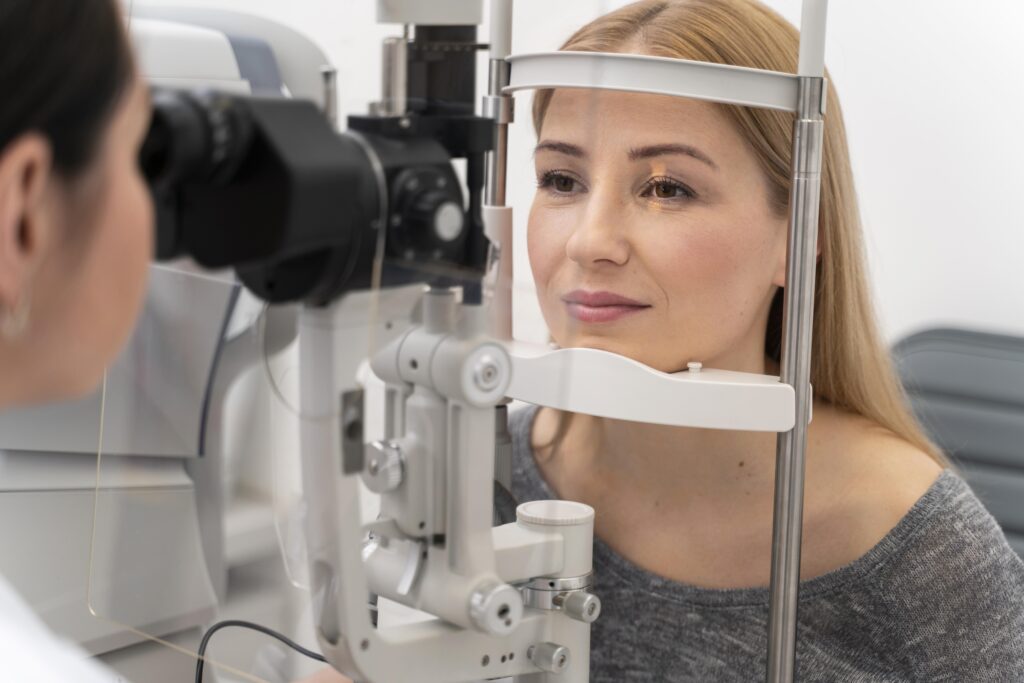Introduction
Laser-Assisted in Situ Keratomileusis (LASIK) has revolutionized the field of vision correction, offering millions the possibility of clear sight without the need for glasses or contact lenses. From its inception in the late 20th century to the advanced techniques employed today, LASIK’s evolution reflects significant strides in medical technology and patient care.
In Port Alberni, British Columbia, Valley Vision Optometry stands at the forefront of this revolution, providing cutting-edge LASIK services tailored to the needs of the community. Located at 4009 Redford St., Port Alberni, BC V9Y 3R9, the clinic offers comprehensive eye care, including LASIK consultations, preoperative assessments, and postoperative care. A key component of their approach is the BeyondSight Assessments, a comprehensive eye exam designed to assess and diagnose eye conditions proactively. This assessment ensures that each patient receives a personalized vision treatment plan, addressing their unique visual needs.
The Genesis of LASIK
The foundation of LASIK surgery was laid in the 1970s with the advent of the excimer laser. This laser, capable of removing corneal tissue without generating heat, allowed for precise reshaping of the cornea—a crucial step in correcting refractive errors like nearsightedness, farsightedness, and astigmatism. In 1988, the first photorefractive keratectomy (PRK) procedure was performed, marking a significant milestone in laser eye surgery. PRK involved removing the outer layer of the cornea to reshape the underlying tissue, but it required a longer recovery time and often resulted in more discomfort compared to later techniques.
The breakthrough came in 1990 when LASIK was introduced. This procedure combined the precision of the excimer laser with the creation of a corneal flap, allowing for quicker healing and less postoperative discomfort. The first LASIK surgeries were performed using a microkeratome—a mechanical device with a blade—to create the corneal flap. This method, while effective, carried risks such as flap complications and variability in flap thickness.
The Femtosecond Laser: A Bladeless Revolution
In 2001, the introduction of the femtosecond laser marked a significant advancement in LASIK surgery. Unlike the microkeratome, the femtosecond laser uses ultrafast pulses of light to create the corneal flap with unparalleled precision. This bladeless approach reduced the risk of complications and improved the overall safety profile of the procedure. Femtosecond-assisted LASIK (FS-LASIK) quickly became the preferred method for creating corneal flaps due to its accuracy and consistency.
Wavefront-Guided LASIK: Customizing Vision Correction
Traditional LASIK procedures aimed to correct basic refractive errors. However, many patients experienced issues like glare, halos, and reduced night vision. Wavefront-guided LASIK emerged as a solution to these challenges. This technique uses a detailed map of the eye’s unique imperfections, known as higher-order aberrations, to guide the laser in reshaping the cornea. By addressing these subtle imperfections, wavefront-guided LASIK offers enhanced visual outcomes and improved quality of vision, particularly in low-light conditions.
Contoura Vision: Precision at a New Level
Building upon wavefront technology, Contoura Vision represents the latest in LASIK advancements. Approved by the FDA in 2016, Contoura Vision uses topography-guided laser technology to map the cornea’s surface with exceptional detail—capturing up to 22,000 data points compared to the 200 points of traditional wavefront systems. This comprehensive mapping allows for highly personalized treatment plans, resulting in superior visual outcomes and reduced incidence of postoperative visual disturbances. Patients undergoing Contoura Vision LASIK often experience vision better than 20/20, with fewer complaints of glare and halos, especially at night.
SMILE: A Minimally Invasive Alternative
Small Incision Lenticule Extraction (SMILE) is a newer, minimally invasive procedure that offers an alternative to traditional LASIK. Unlike LASIK, which creates a corneal flap, SMILE involves creating a small lenticule (disc-shaped tissue) within the cornea, which is then removed through a tiny incision. This technique preserves the corneal surface, potentially leading to faster recovery times and reduced risk of dry eye symptoms. SMILE is particularly effective for correcting nearsightedness and has been gaining popularity among patients seeking a less invasive option.
LASIK at Valley Vision Optometry
In Port Alberni, Valley Vision Optometry offers state-of-the-art LASIK services to help patients achieve clear, unaided vision. The clinic provides comprehensive eye care, including LASIK consultations, preoperative assessments, and postoperative care. A key component of their approach is the BeyondSight Assessments, a comprehensive eye exam designed to assess and diagnose eye conditions proactively. This assessment ensures that each patient receives a personalized vision treatment plan, addressing their unique visual needs.
Personalized LASIK Consultations
Dr. Shaun Golemba and Dr. Morgan Jackson, the experienced optometrists at Valley Vision Optometry, begin the LASIK journey with a thorough consultation. This includes a comprehensive eye exam to assess the health of the eyes and determine suitability for LASIK surgery. Factors such as corneal thickness, refractive error, and overall eye health are evaluated to ensure the best possible outcome.
Call Valley Vision Optometry
At Valley Vision Optometry, Dr. Golemba and Dr. Morgan are committed to providing cutting-edge solutions for vision loss. Call us today at (250)724-0933 to schedule a consultation, or visit our website to learn more. Let Valley Vision Optometry help you embrace a brighter, more independent future.

